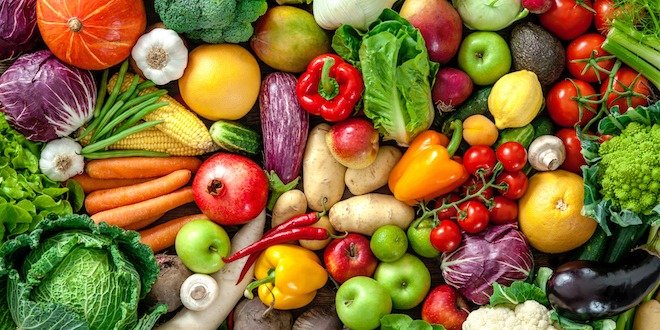Diabetes (both type 1 and type 2) is a condition in which the body’s ability to regulate blood glucose (blood sugar) is impaired. One of the most important tools for managing diabetes is diet. Among all the food groups, vegetables often offer a “safe” and beneficial choice: many are low in carbohydrates or contain complex carbs; many are rich in fiber, vitamins, minerals, antioxidants, and other bio-active compounds that help improve insulin sensitivity, slow glucose absorption, reduce oxidative stress, and support overall metabolic health.
This article explores the top vegetables that are especially beneficial for people with diabetes. We’ll look at how they help, what research supports them, how to include them in meals, portion and preparation tips, and cautions. By the end, you should have a working knowledge of which vegetables to prioritize and how to make them part of a diabetes-friendly lifestyle.
Table of Contents
How Vegetables Help with Blood Sugar Control
Before jumping into specific vegetables, it helps to understand why vegetables are so useful in diabetes management. These are the mechanisms and nutritional features to look for:
Low Glycemic Index (GI) / Low Glycemic Load (GL): These indicate how rapidly a food raises blood sugar. Vegetables that are non-starchy or have complex carbohydrates and plenty of fiber tend to have a low GI, so glucose enters the bloodstream more slowly.
High Dietary Fiber, especially soluble fiber: Fiber slows down digestion and glucose absorption, which helps prevent sharp spikes in blood sugar. It also helps in maintaining satiety, which can help in weight control (important in type 2 diabetes).
Rich in Micronutrients and Bio-active Compounds: Vegetables often contain magnesium, potassium, vitamins C, A, K, folate, and antioxidants. These compounds help with insulin sensitivity, reduce inflammation, combat oxidative stress, and protect against complications (e.g. vascular, neuropathic).
Low in Calories and Carbohydrates (especially net carbs): So you can include good volume in meals without large carbohydrate load.
Phytochemicals, anti-oxidants, and specific beneficial compounds: Examples include sulforaphane (in cruciferous vegetables), charantin (in bitter gourd), flavonoids, carotenoids, etc.
Understanding those helps in evaluating which vegetables are “best” and how to use them smartly.
Criteria for Choosing Vegetables for Diabetes
When selecting vegetables to include regularly in a diabetic diet, consider:
Starchy vs Non-starchy: Non-starchy vegetables are generally better choices. Starchy ones (potatoes, corn, peas, etc.) can spike blood sugar more.
GI & GL values
Fiber content per serving
Micronutrient profile (vitamins, minerals)
Antioxidant & phytochemical content
How they are prepared/cooked — raw, steamed, roasted vs fried or with heavy sauces make a big difference.
Portion size and what you pair them with (protein, fats) because that modifies the overall blood sugar impact.
Top Vegetables for Diabetes
Here’s a selection of vegetables proven helpful, with details on what makes them special, how to eat them, culinary tips, and possible cautions.
1 Leafy Greens
Examples: spinach, kale, Swiss chard, collard greens, mustard greens, fenugreek leaves, bitter greens.
Why they are good:
Extremely low in calories and carbohydrates. Their fiber is high, especially soluble fiber.
Rich in magnesium, which plays a role in insulin sensitivity.
Many contain antioxidants, vitamins A, C, K, folate, and phytochemicals.
Minimal impact on blood sugar when eaten in substantial amounts.
Research & evidence:
Studies have shown that non-starchy vegetables such as leafy greens are among the top recommended foods for diabetic diets.
The high magnesium content of leafy greens supports insulin function.
How to include them:
Raw in salads
Lightly steamed or sautéed with a little healthy fat
In soups, stews, or mixed dishes (e.g., dal + greens in Indian cooking)
Used as wraps or base under proteins
Cautions / Tips:
Some leafy greens (e.g. spinach) are high in oxalates, which for some people can affect kidney stones – ensure proper hydration.
Bitter greens might be an acquired taste—start mixing them with milder greens.
2 Cruciferous Vegetables
Examples: broccoli, cauliflower, cabbage, Brussels sprouts, bok choy, kale (also in leafy greens), etc.
What makes them special:
Contain sulforaphane and related compounds that may improve glucose metabolism and reduce insulin resistance.
High fiber slows digestion.
Packed with vitamins C and K and other antioxidants.
Specific vegetables:
Broccoli: Strong evidence that sulforaphane helps reduce blood sugar, improves antioxidant status.
Cauliflower: Low-carb alternative to rice or potatoes; versatile.
Cabbage: High in fiber; also contains compounds that may reduce inflammation.
How to include:
Lightly steamed or stir-fried with minimal oil.
Raw in slaws or salads.
As base for low-carb substitutions: cauliflower rice, mashed cauliflower, etc.
Cautions:
For some people, cruciferous veggies can cause gas or bloating; cooking helps reduce that.
Go easy if you have thyroid concerns (some cruciferous vegetables in large amounts may interfere; cooking mitigates).
3 Bitter Gourd / Bitter Melon (Karela)
Why it’s special:
Contains compounds like charantin, polypeptide-p (insulin-like peptide), etc., which have been shown in various studies to help lower blood glucose.
Traditional medicine (e.g. Ayurveda, etc.) has long used bitter gourd for glycemic control.
How to include:
Fresh juice in small amounts (morning) if tolerable.
Cooked in stir-fry, curries.
Mixed with other vegetables to reduce bitterness.
Cautions:
Bitter taste is strong—some may dislike it.
Can cause hypoglycemia if combined with diabetic medication—monitor blood sugar.
Pregnant women etc. should consult doctor before regular use.
4 Other Non-Starchy Vegetables
These are lower in carbs and good for regular use.
| Vegetable | Benefits / Notable Properties | How to Use / Cook |
|---|---|---|
| Okra (Bhindi) | Contains soluble fiber (mucilage) that slows sugar absorption; flavonoids; traditional remedy. | Use in curries, stews; whole pods; avoid overcooking which degrades nutrients. |
| Green Beans | Low in carbs, good fiber; helps slow digestion. | Steamed, stir-fried, mixed with spices. |
| Bell Peppers (Capsicum) | Low glycemic; rich in vitamin C and antioxidants. | Raw in salads; roasted or grilled; color adds variety. |
| Asparagus | Low carb, contains fiber, vitamins; helps in insulin sensitivity. | Steam or grill; pair with lean protein. |
| Zucchini | High water content; low net carbs; versatile. | Sautéed, baked, spiralized or “zoodles”. |
| Carrots | Though they have natural sugars, their fiber content and vitamins (beta-carotene) make them useful in moderation. | Eat raw or cooked; watch portion size. |
| Tomatoes | Low GI; source of lycopene; supports heart health. | Raw, cooked; in sauces, soups. |
| Beetroot | Contains vitamins, minerals; natural sugars that are not absorbed too rapidly; beneficial phytonutrients. | Small portions; in salads or lightly cooked. |
4. Vegetables Commonly Highlighted in Indian Context
Because dietary habits are culture-bound and many diabetic people in India rely on local vegetables, here are veggies often mentioned in Indian publications or by Indian nutritionists:
Bitter Gourd (Karela) – as above.
Drumstick (Sahjan / Moringa oleifera) – leaves, pods are nutritious.
Raw Papaya – sometimes used for its enzyme content; cooked as curry.
Cluster Beans (Gawar Phali), Snake Gourd (Chichinda), Ridge Gourd, Pointed Gourd, Spiny Gourd – lower in carbs, often used in Indian dishes.
Okra (Bhindi) – very common and effective.
Practical Tips: How to Include These Vegetables in Your Diabetes Diet
Knowing which vegetables are good isn’t enough — how you eat them matters a lot. Here are practical strategies:
Prioritize non-starchy vegetables in every meal: salads, sides, stir-fry.
Eat vegetables first, before starchy carbs — this slows gastric emptying and reduces the postprandial (after meal) spike in blood sugar. Some studies suggest that eating vegetables (or protein/fat) first helps glycemic control.
Use healthy cooking methods:
Steaming, boiling, grilling, roasting with little oil.
Avoid deep frying or heavy creamy sauces.
Use spices (like turmeric, cumin, ginger, garlic) which can have beneficial metabolic effects.
Pair vegetables with protein and healthy fats (e.g. fish, legumes, nuts, olive oil) — this helps slow absorption of sugar further.
Mind portion sizes and frequency: while most non-starchy vegetables can be eaten liberally, starchy or sweeter root vegetables (like carrots, beets) should be moderate.
Vary your vegetables for nutrient diversity (different colors, types).
Monitor how your body responds: blood sugar tracking is essential. Some vegetables may cause different responses in different people.
Use substitutions: e.g., cauliflower rice instead of white rice; zucchini noodles instead of pasta; leafy greens instead of starchy sides.
Fresh over processed: Fresh or minimally processed vegetables keep more fiber and nutrients. Canned may be okay but watch added sugar/salt.
Seasonal, local choices are often better for availability and cost.
Scientific Evidence & Clinical Studies
Here are some key findings from research relevant to vegetable consumption and blood sugar control:
Sulforaphane from broccoli and cruciferous vegetables has been shown in some studies to improve insulin sensitivity, reduce fasting glucose, reduce markers of oxidative stress.
Okra: Animal and limited human studies indicate okra polysaccharides and flavonoids help reduce postprandial glucose and improve insulin function.
Bitter Gourd: Several small studies show juice or cooked Bitter Gourd helps reduce blood sugar, improve HbA1c (average blood sugar over 3 months) in type 2 diabetics.
Leafy greens and magnesium: Epidemiological studies link higher intake of magnesium-rich vegetables (e.g. spinach, kale) with lower risk of type 2 diabetes and better glycemic control.
Vegetable fiber & non-starchy vegetables in general: Many dietary guidelines and randomized trials show diets high in fiber and vegetables lead to improved glycemic control, reduced HbA1c, and lower risk of complications.
Sample Meal Plan Ideas
Here are sample ideas to build diabetes-friendly meals incorporating these vegetables. (Assumes type 2 diabetes or diet under doctor/nutritionist supervision.)
| Meal | Sample Vegetables / Dishes | Notes |
|---|---|---|
| Breakfast | Spinach and tomato omelette; sautéed peppers; a side of bitter gourd juice (small) | Pair with protein reduces morning glucose spike. |
| Mid-Morning Snack | Sliced cucumber and bell pepper with hummus or yogurt dip | Crunch, fiber, and low carbs. |
| Lunch | Mixed vegetable salad (lettuce/kale/spinach, tomatoes, green beans, cabbage) + grilled chicken / legumes; cauliflower rice | High fiber, low starchy carbs. |
| Afternoon Snack | Steamed broccoli or asparagus with olive oil & lemon | Keeps you full, stabilizes sugars. |
| Dinner | Stir-fried okra + onion + garlic; side of sautéed leafy greens; small portion of starchy food if needed (rice or chapati) | Vegetable first, then carbs. |
| Dessert / Extra | Tomato salad; raw carrot sticks | Sweet cravings? Use naturally sweet veggies in moderation. |
Precautions, Cautions, and What to Avoid
While vegetables are broadly beneficial, there are certain things to watch out for:
Starchy Vegetables: Potatoes, sweet potatoes, corn, peas in large quantities; root vegetables when cooked down may act more like sugars. These should be limited or paired with fiber/protein and portion controlled.
Added Sugars / Sauce / Fats: Vegetables cooked in sugary sauces, heavy creams, or lots of butter/oil negate some of their benefits.
Medication interactions / Hypoglycemia: If you are using medications (insulin, sulfonylureas, etc.), eating large amounts of blood-sugar-lowering vegetables (especially bitter gourd etc.) could increase risk of hypoglycemia. Monitor and adjust under medical supervision.
Digestive tolerance: Some high-fiber or cruciferous veggies can cause gas, bloating. Gradually increase intake; use cooking methods that reduce these effects.
Allergies / Sensitivities: Some vegetables may cause allergic-type responses for some people.
Kidney issues: If you have diabetic kidney disease, certain vegetables high in potassium or oxalates may need limitation (depends on doctor’s advice).
Individual variations: Everyone has somewhat different responses. Use monitoring (blood glucose, HbA1c) to see what works best for you.
Additional Lifestyle & Dietary Strategies That Enhance Vegetable Benefits
Vegetables are more effective when combined with:
Regular physical activity: helps improve insulin sensitivity.
Weight management / achieving healthy body composition.
Adequate hydration.
Proper sleep and stress management (stress hormones can raise blood sugar).
Balanced meals: combining vegetables + lean protein + healthy fats + whole grains (where applicable) to stabilize glucose.
Monitoring and adjusting: keeping track of what you eat, how you respond, and adjusting vegetable types and portions.
FAQ
Q1: Can vegetables lower blood sugar fast?
A1: Vegetables, especially those with a low glycemic index and high fiber, can slow down the rise in blood sugar after eating, but they don’t necessarily act as fast-acting “glucose-lowering” agents like medications. Their benefit is more in preventing spikes, improving long-term glycaemic control (HbA1c), and improving insulin sensitivity.
Q2: Are “starchy” vegetables bad for diabetes?
A2: Not necessarily “bad,” but they need to be used with more care. Starchy vegetables like potatoes, corn, peas, sweet potatoes etc., contain more digestible carbohydrates and higher glycemic index/load. If you do include them, control portion size, pair with fiber / protein, choose cooking methods that slow digestion (boiled, baked vs fried), and monitor how they affect your blood sugar.
Q3: How much vegetable intake is ideal per day for someone with diabetes?
A3: Guidelines vary, but a common recommendation is at least 3-5 servings of vegetables daily, with a focus on non-starchy ones. For non-starchy vegetables, you can often go higher. Discuss with a dietician to adjust based on your total caloric and carb needs.
Q4: Do raw vegetables work better than cooked ones for blood sugar control?
A4: Both have benefits. Raw vegetables preserve more vitamin C and some phytochemicals; however, some cooked preparations (light steaming, roasting, stir-frying) make vegetables more digestible, reduce anti-nutrient content, or increase bioavailability of certain nutrients. Overcooking reduces nutrients. So a mix is good.
Q5: Is bitter gourd safe for everyone?
A5: For many people with type 2 diabetes, bitter gourd (karela) has benefits, but there are cautions. It can cause gastrointestinal upset; it might interact with medications and risk hypoglycemia if blood sugar drops too low. Pregnant women, children, or people with certain health conditions should consult a doctor before using it frequently or in high dose.
Q6: What are good substitutes if I dislike certain vegetables?
A6: There are many options. If you dislike bitter gourd, try other bitter greens (like kale or mustard greens) or include vegetables with mild flavour like zucchini, bell pepper. Use spices/herbs to flavour. Gradual introduction helps. Also, using small amounts of a disliked vegetable mixed with preferred ones works.
Q7: How do vegetables affect HbA1c vs daily glucose readings?
A7: Vegetables mostly help in reducing post-meal glucose spikes and improving insulin sensitivity, which over time leads to lower average blood sugars measured by HbA1c. So while one vegetable won’t instantly alter your HbA1c, consistent dietary patterns over weeks/months will.
Q8: Should I eat vegetables before carbohydrates?
A8: Yes — some studies indicate eating vegetables (or protein/fat) before carbohydrates helps reduce the postprandial glucose rise compared to eating carbs first. This ordering can be a simple trick to improve glycemic control.
Q9: Are canned or frozen vegetables okay?
A9: Often yes — if they are without added sugars or heavy sauces. Frozen vegetables usually retain many nutrients. Be mindful of sodium content (especially for heart/kidney health) and added preservatives.
Q10: Can vegetables reverse diabetes?
A10: Diabetes type 2 may be managed or sometimes brought into remission through diet, weight loss, exercise, etc. Vegetables are a key component of that dietary strategy. But reversal depends on many factors: how early one intervenes, how good adherence is, overall lifestyle, genetics, etc. Type 1 diabetes currently is not reversed by diet; insulin therapy remains necessary.












